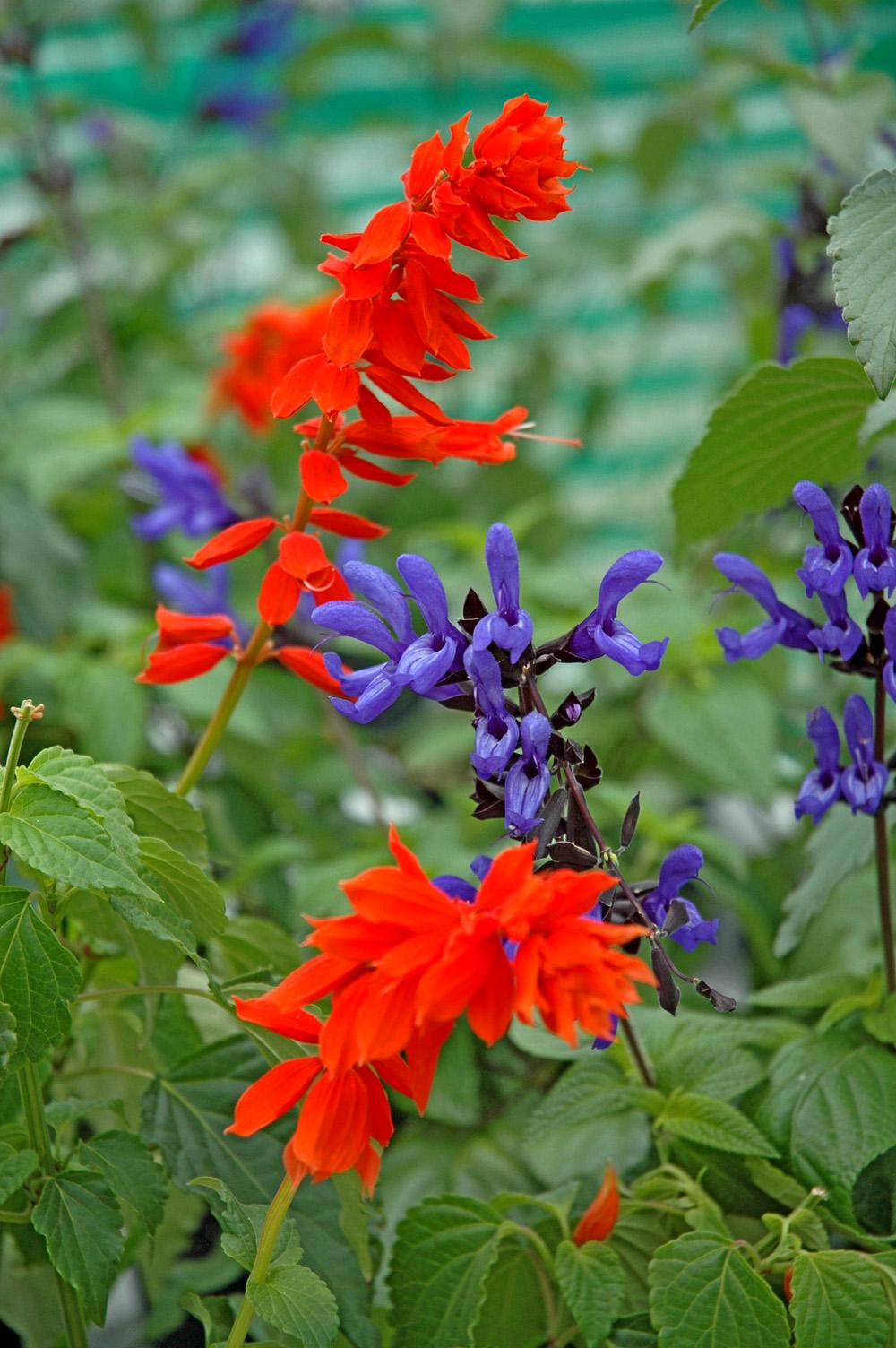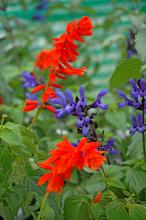Information Possibly Outdated
The information presented on this page was originally released on September 28, 2006. It may not be outdated, but please search our site for more current information. If you plan to quote or reference this information in a publication, please check with the Extension specialist or author before proceeding.
Gardeners will come to love 'Black and Blue'
By Norman Winter
MSU Horticulturist
Central Mississippi Research & Extension Center
The term “black and blue” usually refers to the results of someone getting in a fight and not coming out the winner. You might look black and blue after clearing some native jungle for your landscape.
But if you try the plant known as Black and Blue, you will come out the winner, as will the countless hummingbirds that will compete for its nectar.
Black and Blue is a variety of blue anise sage, or Salvia guaranitica. The blue anise sage has gotten popular, probably due in part to its 1995 selection as a Georgia Gold Medal Winner. This group felt so strongly about the plant that they selected the whole species rather than a single variety.
Since then, we have seen several varieties enter the marketplace, but it appears Black and Blue is emerging as the most popular.
You may wonder how it came to be called Black and Blue. The flowers have one of the rarest colors in the gardening world -- an old-fashioned cobalt blue that might remind you of an old Milk of Magnesia bottle. The black comes from the truly black calyx surrounding the petals.
Black and Blue plants produce flowers that are up to 2 inches long on 10-inch spikes that reach 3 to 4 feet in height and almost resemble shrubs.
Choose a site in full sun for best flowering. This plant is winter-hardy throughout the state, but only with good drainage. They can take our cold, but couple that with soggy soil and the plant will be history.
Prepare the bed by adding 3 to 4 inches of organic matter like fine pine bark or compost, and till to a depth of 8 to 10 inches. While preparing the bed, incorporate 2 pounds of a 12-6-6 slow-release fertilizer with minor nutrients. Plant in the spring after the soil warms, and place them at the same depth they are growing in the container. Water deeply and apply a good layer of mulch.
The Black and Blue salvia looks great among yellow and golden flowers like the perennial black-eyed Susan or Goldstrum, or grown behind a layer of New Gold lantana. This summer, I had the opportunity to see it grown with a new Salvia van houttei variety called Paul.
If you have grown Salvia van houttei, you know it is typically wine-colored, but Paul is a vibrant, if not iridescent, red. This combination of Paul with the Black and Blue was almost
indescribable. Pink or white buddleias also make nice companion plants that appeal to hummingbirds and butterflies.
The Black and Blue is easy to care for. Deadhead as needed, and do not be afraid to cut back for better branching. We cut all of our salvias hard for the Fall Flower and Garden Fest about six to seven weeks prior to the event. Should the plant look a little tired in midsummer, give it a pick-me-up with a light application of fertilizer.
The plant will probably need to be divided in three years. Divide in early spring with the emergence of new growth. Like many salvias, this one is easy to propagate by cuttings. Make sure it goes into winter with an added layer of mulch.
Should you have a good stand blooming now, particularly if they are seen by the public, add some pumpkins for a neat fall display.








